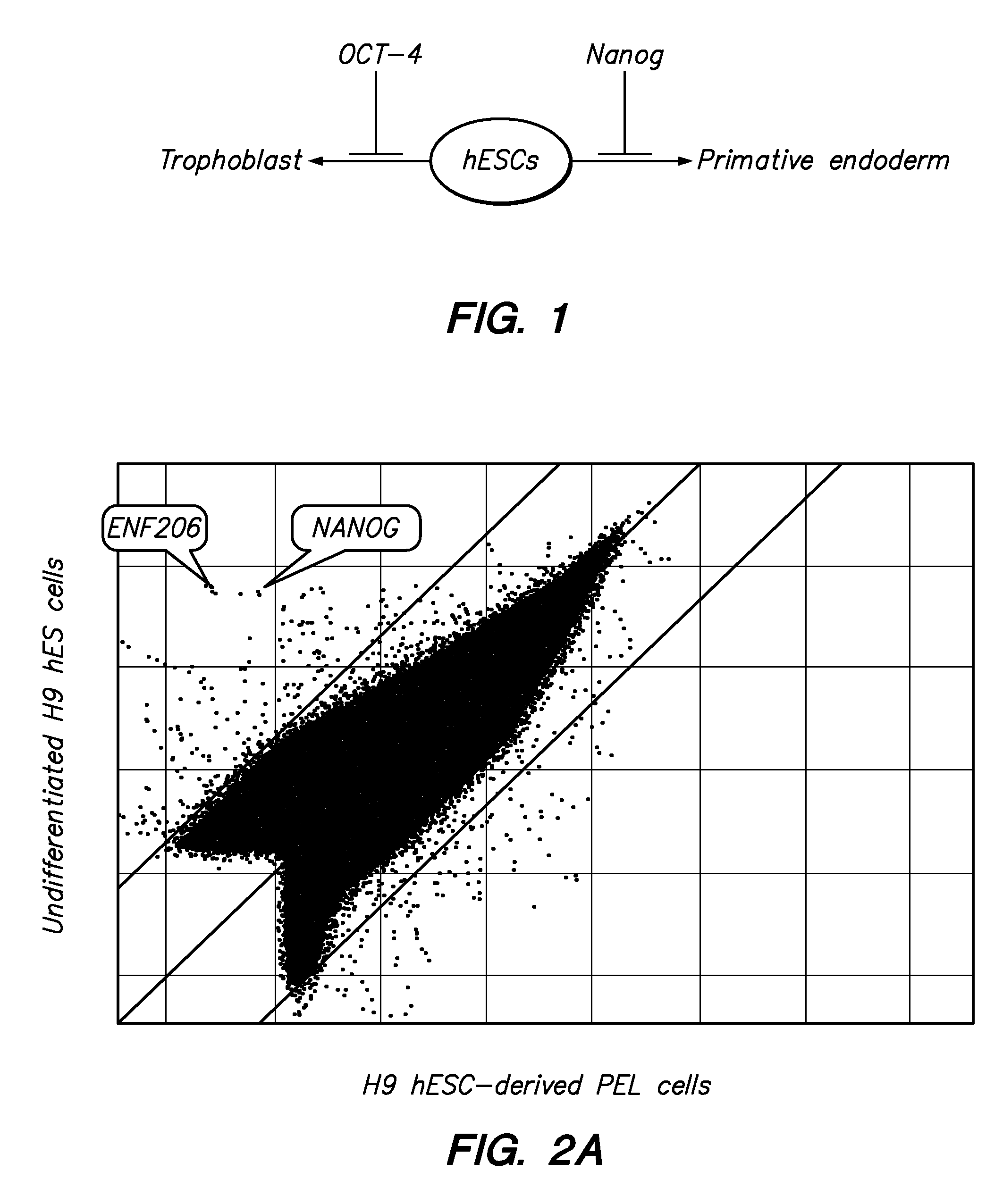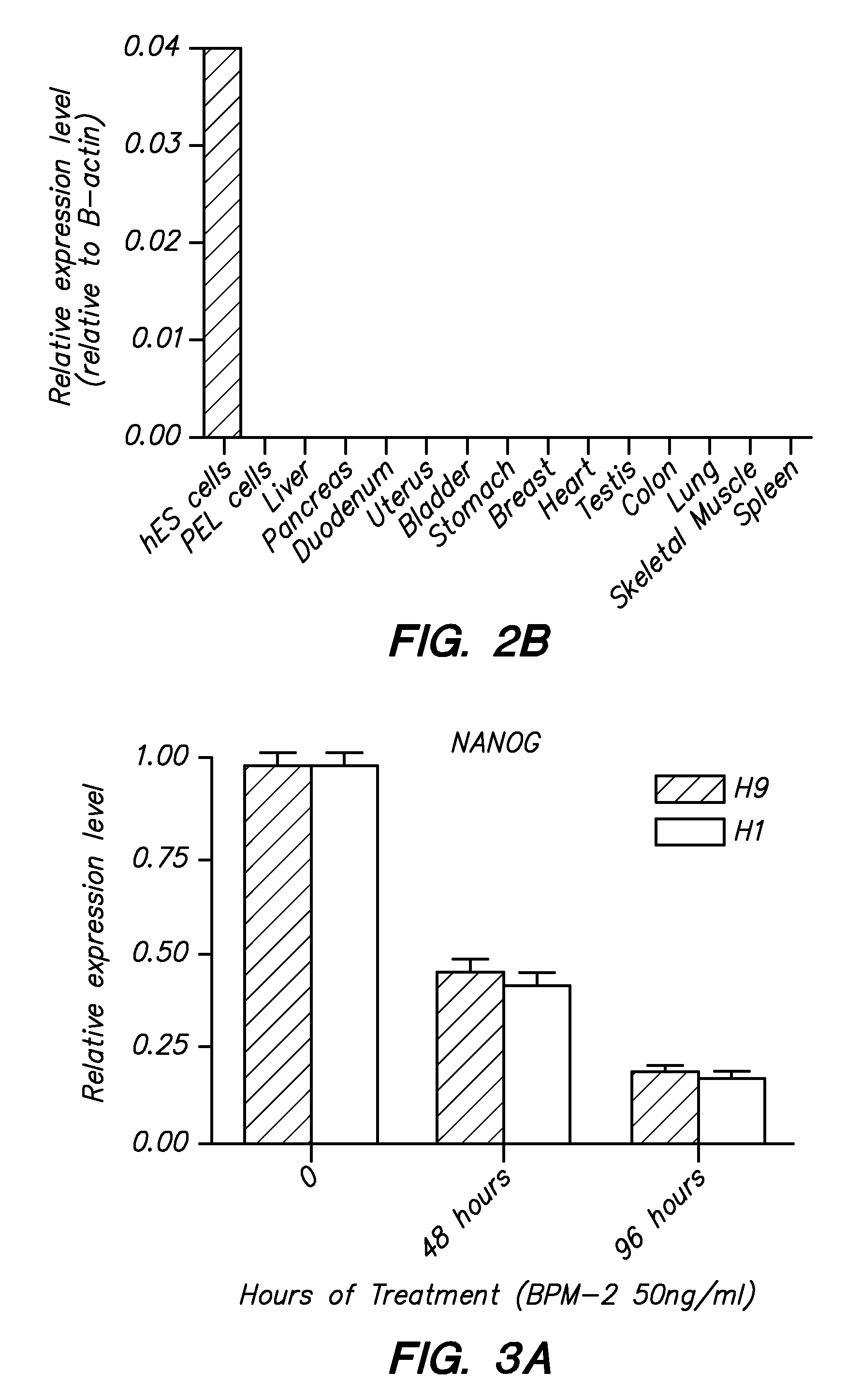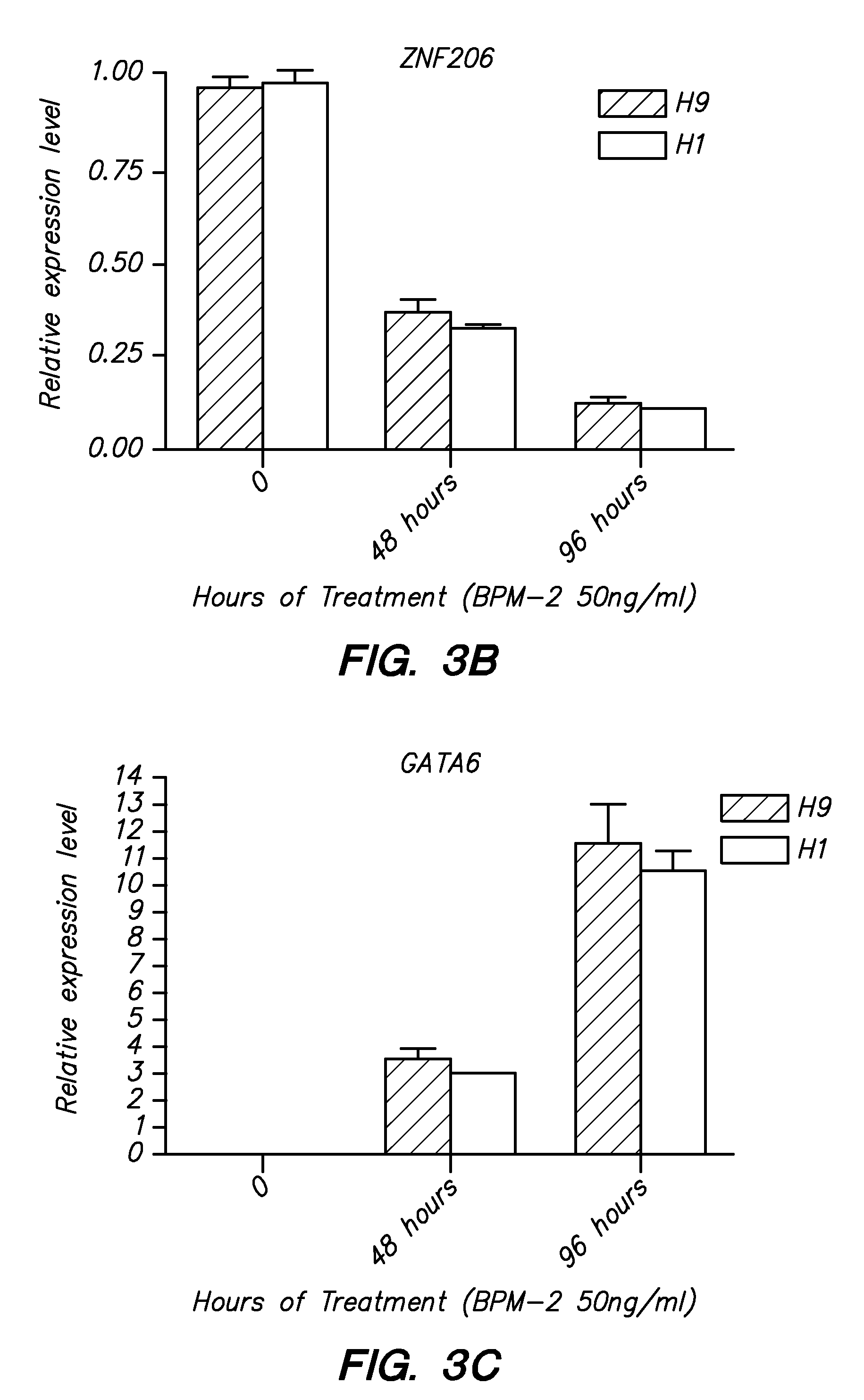ZNF206: A Novel Regulator of Embryonic Stem Cell Self-renewal and Pluripotency
a stem cell and self-renewal technology, applied in the field of stem cell research, can solve the problems of poorly understood molecular basis of the regulation of pluripotency and early lineage commitment of hescs
- Summary
- Abstract
- Description
- Claims
- Application Information
AI Technical Summary
Benefits of technology
Problems solved by technology
Method used
Image
Examples
example 1
Materials and Methods
[0152]Human Embryonic Stem Cell (hESC) Culture. hESC lines WA01 (H1) and WA09 (H9) (WiCell, Madison Wis.) were initially maintained on irradiated mouse embryonic fibroblast (MEF) feeder cells in medium that consisted of DMEM / F-12 (80%), Knockout Serum Replacement (20%), L-alanyl-L-glutamine (GlutaMax; 2 mM), MEM nonessential amino acids (1×), b-Mercaptoethanol (100 mM) (all from Invitrogen, Carlsbad, Calif.), and bFGF (4 ng / ml) (PeproTech Inc., Rocky Hill, N.J.) as described previously (Thomson et al., 1998), then transferred to human feeder layers (HS27 line, ATCC). For feeder-free growth, cells were transferred to Matrigel (growth factor-reduced, Becton Dickinson, Bedford, Mass.) or human purified laminin-coated dishes, and cultured in the same medium with a higher concentration of bFGF (20 ng / ml). HESCs were mechanically passaged every 5 to 7 days by cutting undifferentiated hESC colonies into small pieces using a 27 G PrecisionGlide Needle attached to a 1 ml...
example 2
[0173]As discussed in Example 1 above, the discovery of ZNF206 was one of the byproducts of having devised an entirely defined medium for growing human embryonic stem cells (hESCs). Briefly, we determined the minimal essential components of a defined culture system that could stably maintain hESCs in a self-renewing pluripotent state and serve as a platform for directing such hESCs towards particular differentiated cell types efficiently and exclusively using small molecules inducers, without an intervening multi-lineage embryoid body (EB) stage. In this culture system, hESCs spontaneously form an autogenic supportive niche composed of what proved to be primitive endoderm (PE) cells that could, in turn, support efficient clonal expansion and long-term self-renewal of hESCs, presumably providing paracrine support in vitro, much as the PE does for epiblast in vivo. High-throughput genomic and proteomic analysis of this clonally-related hESC-derived PE—when compared with the undifferen...
PUM
| Property | Measurement | Unit |
|---|---|---|
| Fraction | aaaaa | aaaaa |
| Fraction | aaaaa | aaaaa |
| Fraction | aaaaa | aaaaa |
Abstract
Description
Claims
Application Information
 Login to View More
Login to View More - R&D
- Intellectual Property
- Life Sciences
- Materials
- Tech Scout
- Unparalleled Data Quality
- Higher Quality Content
- 60% Fewer Hallucinations
Browse by: Latest US Patents, China's latest patents, Technical Efficacy Thesaurus, Application Domain, Technology Topic, Popular Technical Reports.
© 2025 PatSnap. All rights reserved.Legal|Privacy policy|Modern Slavery Act Transparency Statement|Sitemap|About US| Contact US: help@patsnap.com



